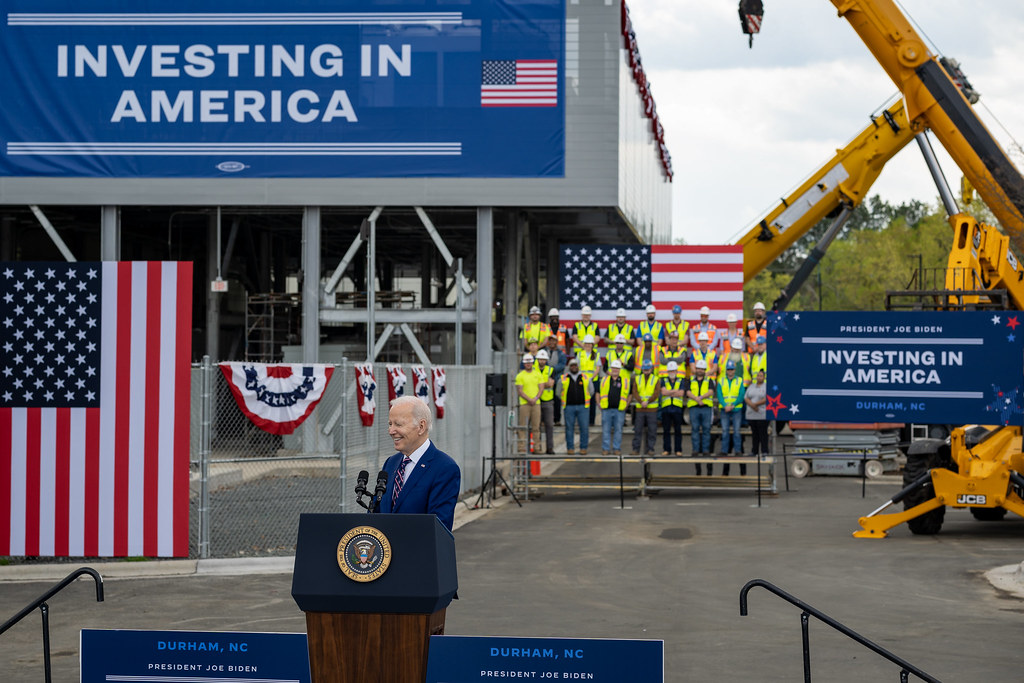Some time ago, smart politicians figured out they could avoid fallout from unpopular increases in government spending by referring to it as “investing.” To dodge criticism for massive increases in Education Department spending, they called it “investing in our children’s future.” While ramping up spending on EPA, they called it “investing in a cleaner America.”
It is politically brilliant, but an ironic concept. “Investing” means buying something at today’s price, to sell profitably later at a higher price. That basic concept of free enterprise has now morphed into the idea that government can spend money on some program, which will “profit” the whole society in some tangible way later by making the world better. But that is not the same as “investment.” The government does not spend a dollar now and get back two dollars by selling anything later. Quite the opposite; government money, once spent, is gone and must be replaced by spending new money again next year.
The “American Rescue Plan” (COVID Stimulus), signed into law two months into President Biden’s term, appropriated $1.9 trillion, which we were told was an “investment” in a healthier country. Did it make money like a sound investment? Obviously not. Instead, within another two years, Congress also passed the $1.2 trillion Infrastructure Bill, the $280 billion CHIPS and Science Act, and the $891 billion climate bill cynically called the Inflation Reduction Act. Collectively, those measure comprise what the Administration calls its “Investing in America Agenda.” The White House says it “is mobilizing historic levels of private sector investments.” But that is not “private sector investment.” It is government spending.

The poster child for redefining these terms may be the Secretary of the Interior, who just announced $44 million worth of projects said to be part of the Investing in America Agenda. They fall under a newly invented program called “Restoration and Resilience Framework,” not found in any law. But who needs an authorizing statute? We have a framework!
The program is described as a way “to restore and strengthen climate resilience across America’s national parks.” If you’re not sure what that means, join the club. You can read pages of press releases and program “details,” and still not know. You will read that this program will “support coordination across agency programs and ensure collaborative, strategic and measurable landscape-scale benefits that advance climate resilience.” What?
Put simply, that means the National Park Service will absorb this money for in-house priorities such as more employees, new software, studies, reports, and bureaucratic programs that will produce almost nothing visible to park visitors. Sound harsh? Look for the primary buzzwords that always signal in-house spending, rather than field work: planning, facilitation, evaluation, assessment, capacity-building, analysis, data tools, and the like. Those words are used to describe almost all the newly announced “resiliency” projects. The Park Service Director says all this spending will not only fill the agency’s “environmental planning needs,” but will “bolster park resources for years to come.” How’s that for an “investment?”
Of the new Park Service spending, $793,00 will “Enhance climate change resilience… through co-stewardship capacity building” mostly in Alaska. Capacity building means hiring additional staff, either by the agency or its contractors. Another $900,000 will go to “Restore and assess aquatic ecosystems to improve resilience and understand vulnerability.” Translation of “assess” and “understand” – publishing studies.
Another $1.45 million will “Improve compliance pathways… resulting from vulnerability assessment at all Parks.” $750,000 will be spent to “Assess and prescribe treatment for climate threatened cultural resources.” Not for actual treatment, mind you, but to “assess and prescribe.” $750,000 will pay to “Create a comprehensive flood-risk geospatial layer” (a computer model), and over $400,000 will be used to “Enhance operational capacity” related to “bison conservation efforts” in several states, Meanwhile, an additional $510,000 will “Facilitate planning for potential bison recovery in eastern Alaska.” No actual bison reintroduction, just planning – though most bison are unaware of all this activity on their behalf.
There are $44 million worth of such projects, but only a handful of actual environmental improvements, such as $258,000 to remove invasive plant species on the Colorado River in Arizona. But $1.1 million will be spent “Enhancing invasive plant management teams’ capacity.” There are huge grants to hire more scientists, “enhance capabilities to invest effectively,” publish monitoring and inventory data, evaluate and analyze vital signs, and develop adaptation plans.
Most of us do not have huge investment portfolios. But whatever we have managed to put aside for retirement, I would never recommend entrusting it to people who think those are sound “investments.”




Comments on this entry are closed.